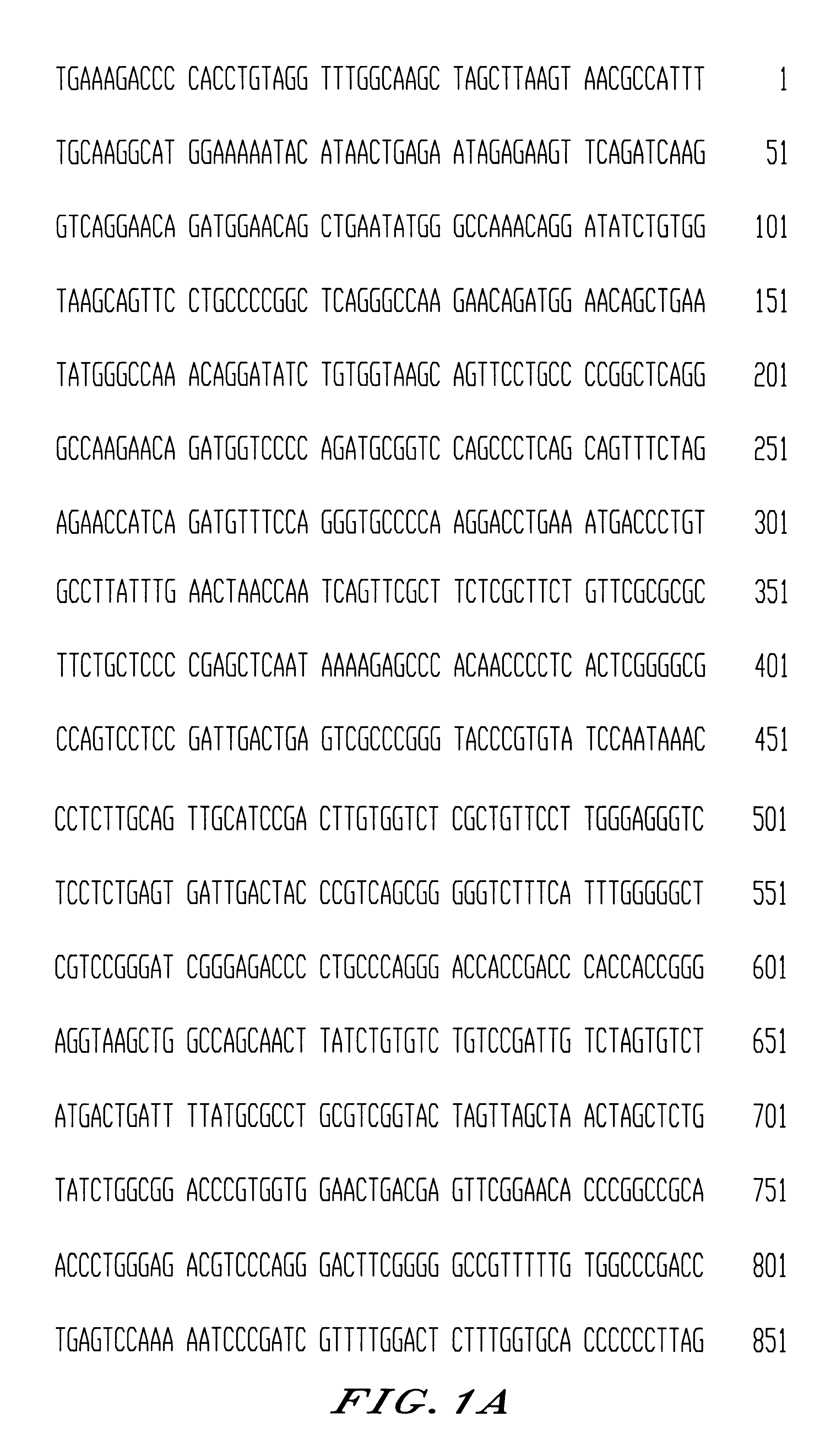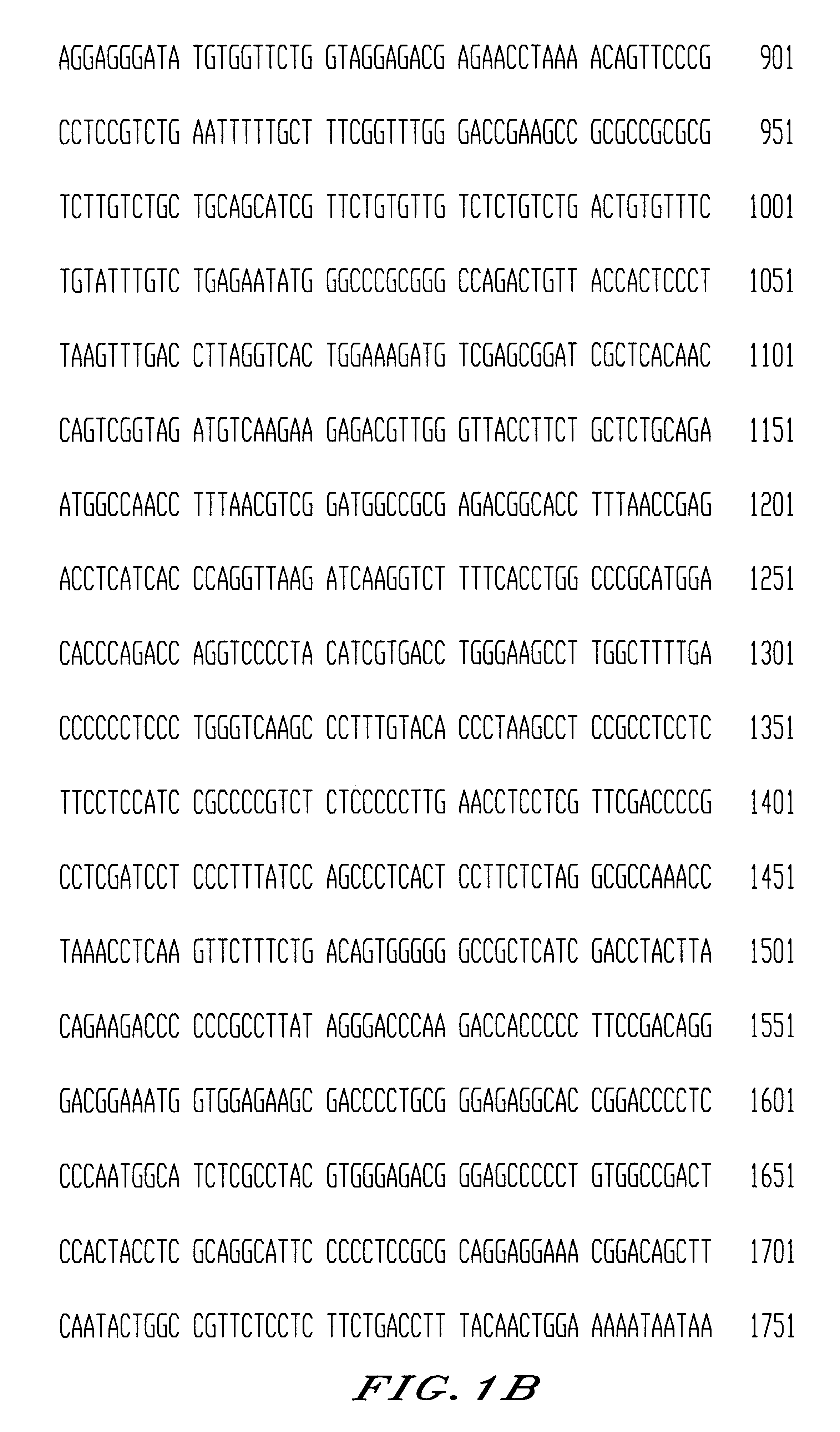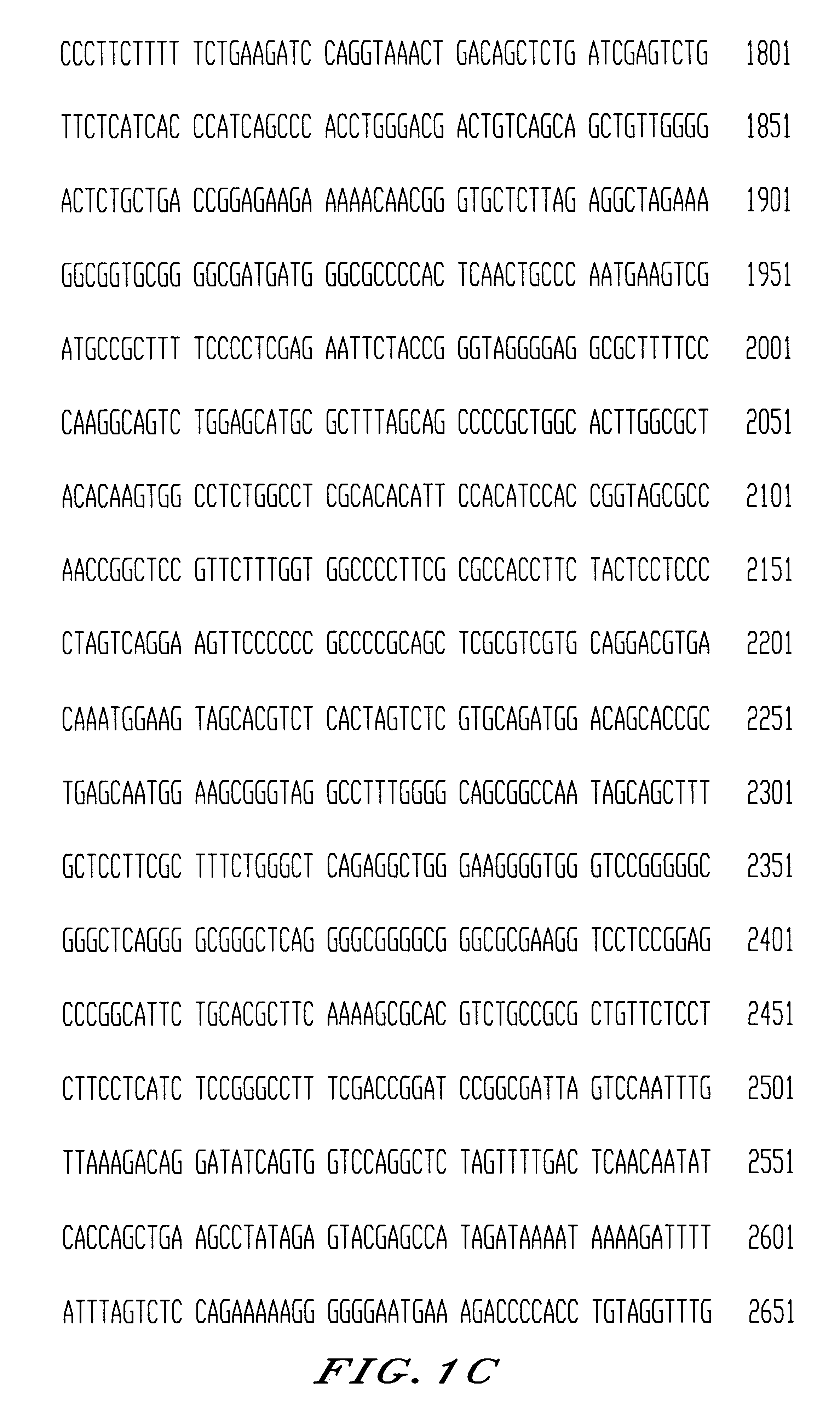Recombinant retroviral vector
a technology of retroviral vectors and vectors, applied in the field of recombinant retroviral vectors, can solve the problems of being accompanied by a considerable diminution of vector titers, defective or insufficient expression,
- Summary
- Abstract
- Description
- Claims
- Application Information
AI Technical Summary
Benefits of technology
Problems solved by technology
Method used
Image
Examples
example 1
Secretion of a lysosomal enzyme (beta-glucuronidase) in the mouse with implants containing PTFE fibers, rat tail collagen and skin fibroblasts modified with a retroviral vector.
1.1. Constituents
Three constituents are assembled in vitro. The method described below is applicable to the construction of neo-organs of 1 ml containing 5.times.10.sup.6 to 10.sup.7 genetically modified cells. The same proportions are used for the formation of neo-organs of large size containing 1 to 5.times.10.sup.9 cells.
1) Polytetrafluoroethylene fibers (Gore and associates) sterilized by autoclaving 120.degree. C., 30 minutes) are coated by type 1 collagen. The fibers are bathed in a 0.1% solution of rat tail collagen (Sigma) in 0.1 N acetic acid. This treatment is carried out under vacuum for 1 hour at room temperature in order to expel air present between the synthetic fibers. The collagens of mouse, bovine or human origin may be used indiscriminately. After drying for 24 hours under a hood with lamina...
example 2
Secretion of a lysosomal enzyme (beta-glucuronidase) in the dog with implants containing PTFE fibers, rat tail collagen and skin fibroblasts modified with a retroviral vector
Four dogs received from 1 to 6 neo-organs each containing 10.sup.9 autologous fibroblastsgenetically modified by means of the vector M48-.beta.glu in order to secrete human beta-glucuronidase. Three animals of the Labrador race weighing 21 to 39 kg and one animal of the Beagle race weighing about 9 kg were used. The surgical implantation performed under general anesthesia consisted of inserting the implants between the two parietal and visceral layers of the omentum close to the greater curvature of the stomach. This rapid operation is accompanied by simple operative follow-ups and makes it possible to envisage in the future an implantation by coeliosurgery. One and a half months, four months and six months after the implantation an exploratory laparotomy was performed in order to make a macroscopic check-up of ...
example 3
Secretion of a lysosomal enzyme (beta-L-iduronidase) in the mouse with implants containing PTFE fibers, rat tail collagen and skin fibroblasts modified with a retroviral vector
A cDNA coding for the human beta-L-iduronidase was introduced into the vector M48 and a recombinant retrovirus was produced in the .PSI.CRIP line. Fibroblasts of nude mice were placed in primary culture and infected with this retroviral vector. The cells secreting the human enzyme were introduced into six syngeneic recipients in two neo-organs each containing 10 millions cells.
The animals were sacrificed after 35 to 77 days and the presence of the human enzyme in their liver and spleen was verified by means of a monoclonal antibody. An enzymatic activity equivalent to 1-2% of the endogenous activity was demonstrated, indicating the production of the enzyme from the cells of the neo-organ and its detection at a distance.
PUM
| Property | Measurement | Unit |
|---|---|---|
| concentration | aaaaa | aaaaa |
| molar ratio | aaaaa | aaaaa |
| molar ratio | aaaaa | aaaaa |
Abstract
Description
Claims
Application Information
 Login to View More
Login to View More - R&D
- Intellectual Property
- Life Sciences
- Materials
- Tech Scout
- Unparalleled Data Quality
- Higher Quality Content
- 60% Fewer Hallucinations
Browse by: Latest US Patents, China's latest patents, Technical Efficacy Thesaurus, Application Domain, Technology Topic, Popular Technical Reports.
© 2025 PatSnap. All rights reserved.Legal|Privacy policy|Modern Slavery Act Transparency Statement|Sitemap|About US| Contact US: help@patsnap.com



